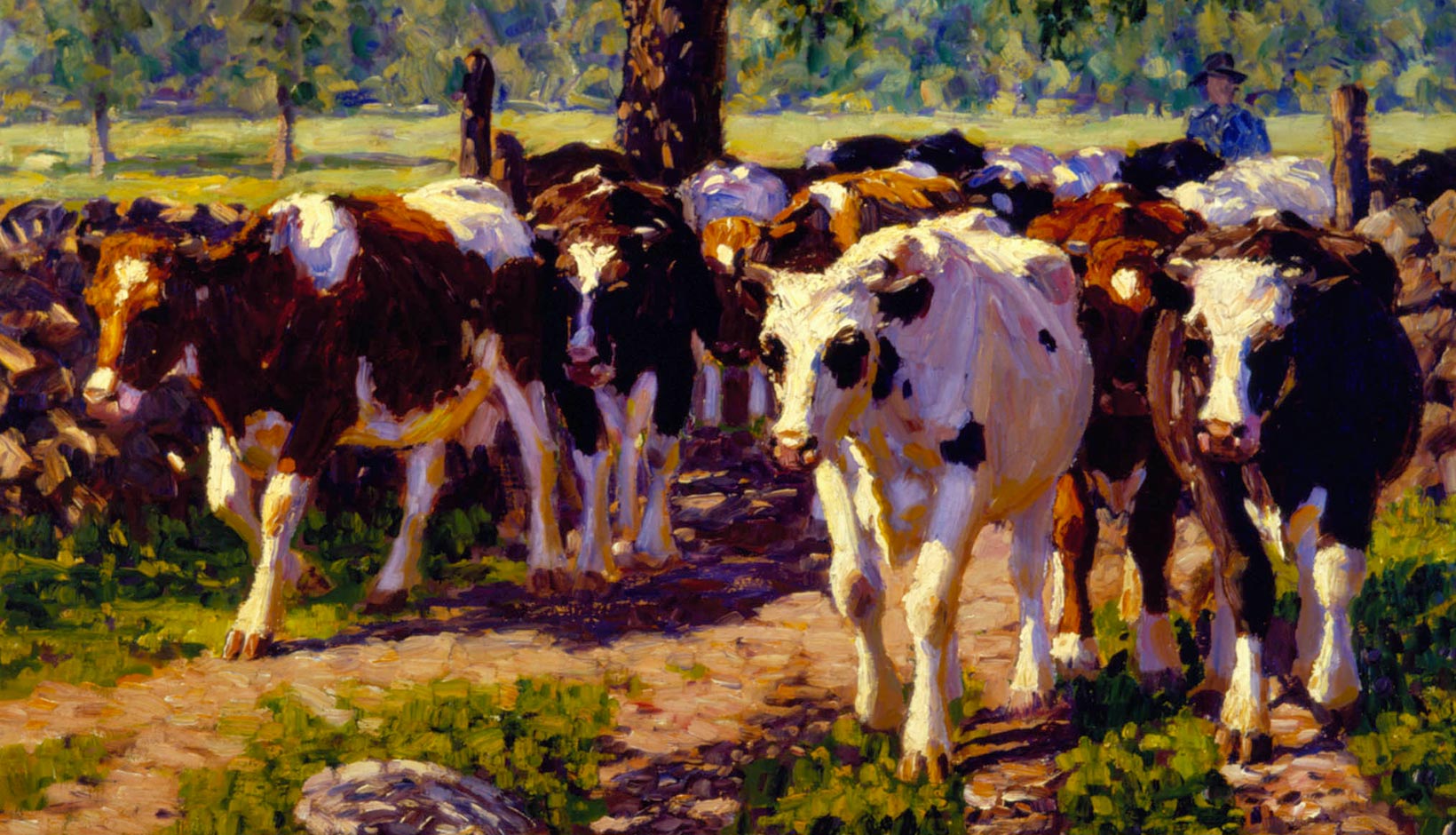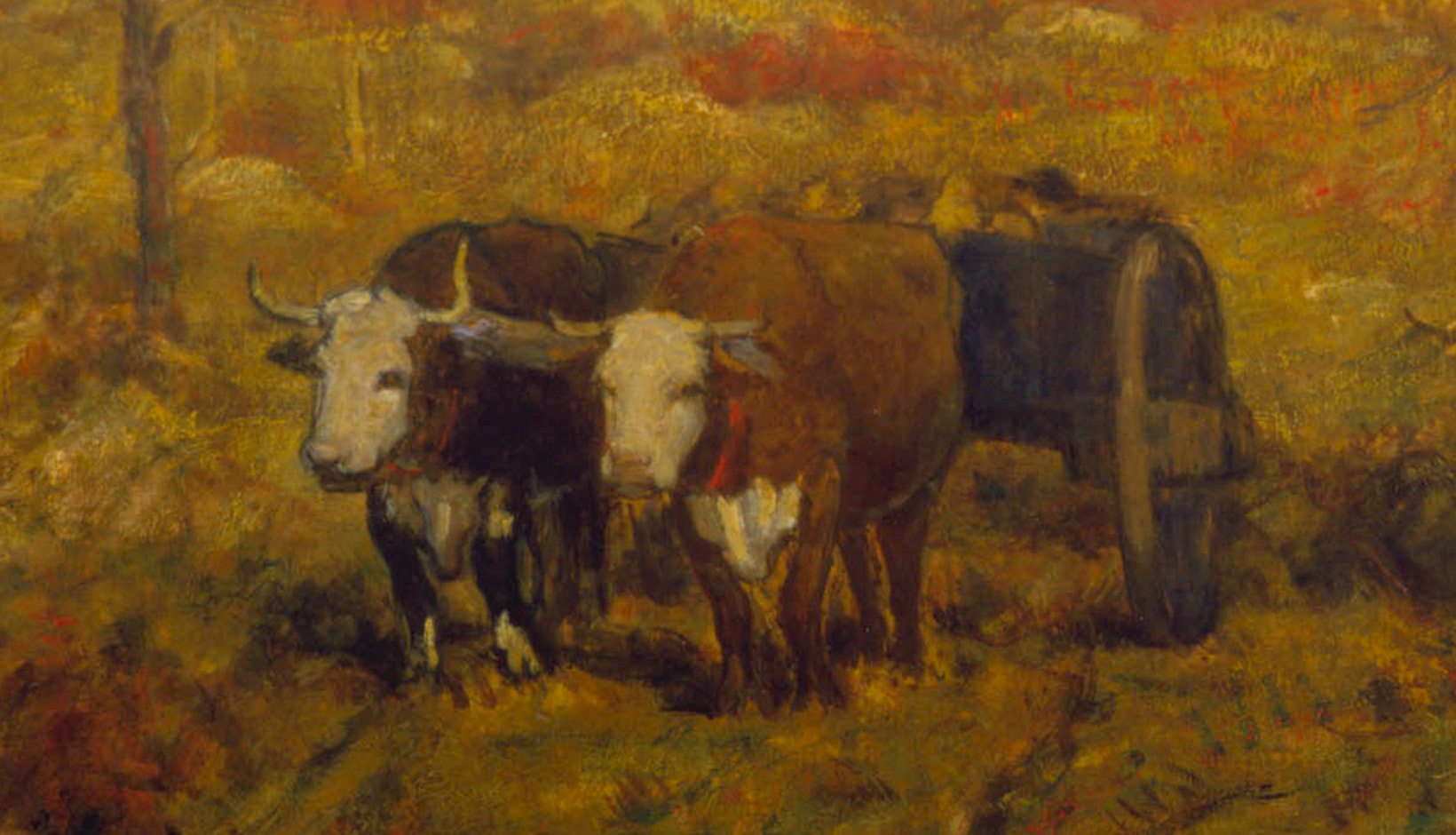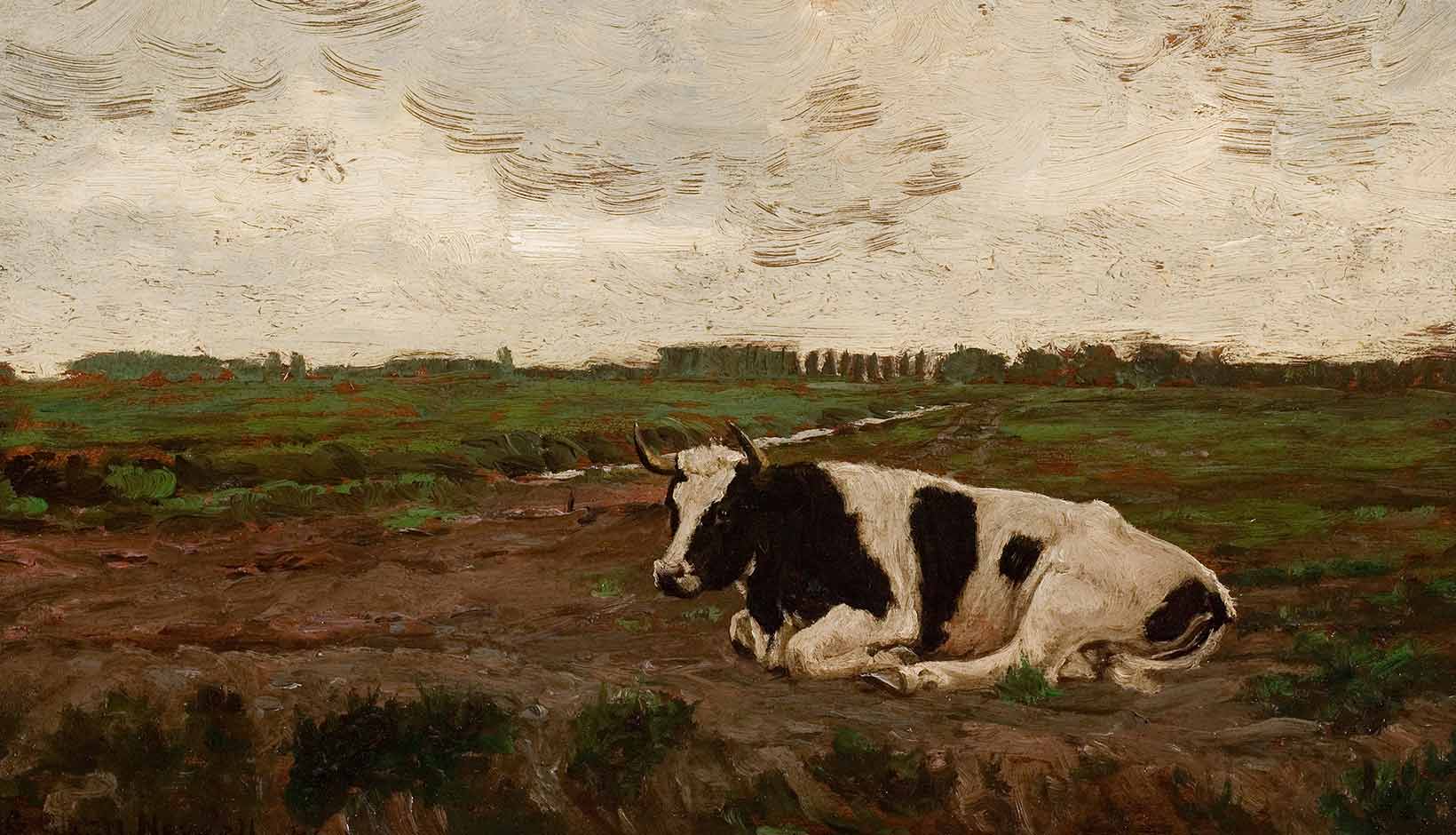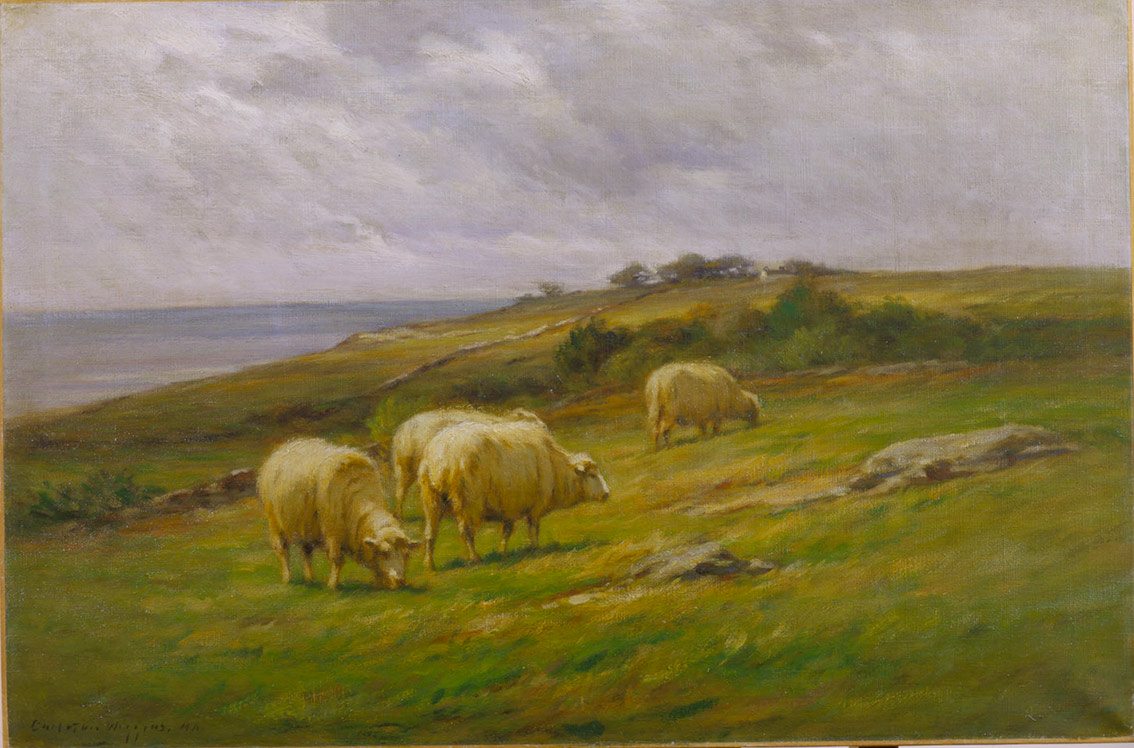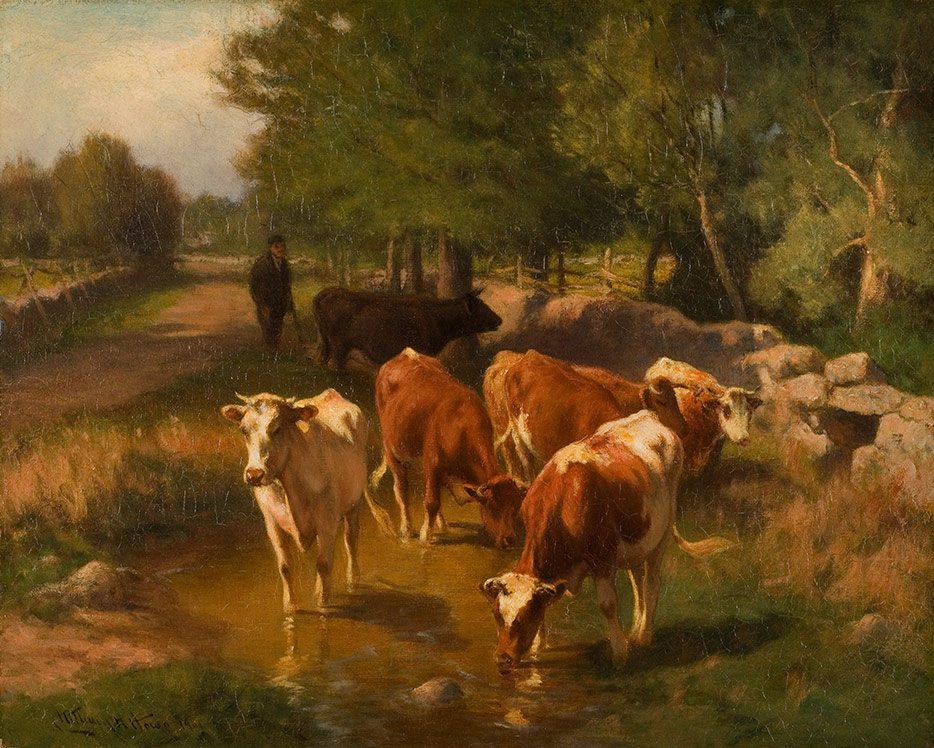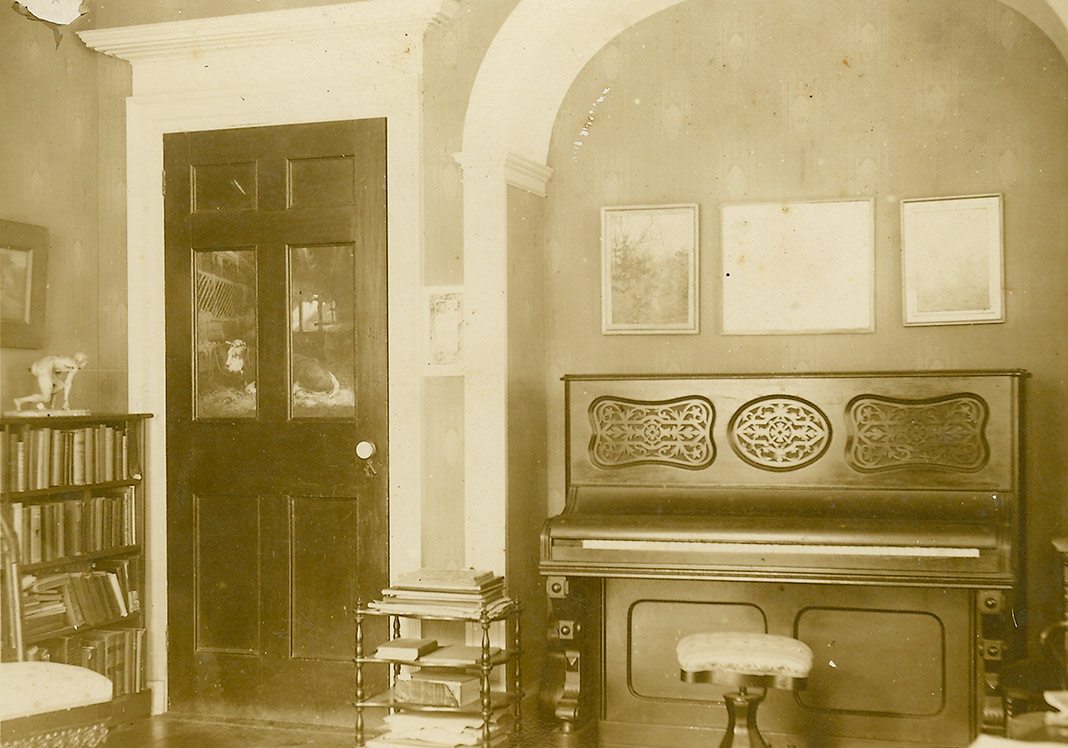Fox Chase
The Cow
- Museum Hours: Tuesday through Sunday, 10am to 5pm.
One of the main reasons Henry Ward Ranger was attracted to Old Lyme was its proximity to the rural subjects of farms, fields, and farm animals. Sheep, oxen and horses were all painted, but the cow was the most popular.
Whether lying in a straw-filled stable or lazily grazing in a grassy meadow, the many images of cows captured the rural lifestyle of Lyme and conjured up a simpler time when man was more tied to the land—a subject that was popular at the time when modernity was sometimes viewed as a threat. This “cow craze” made the market for cow paintings very profitable and the images most fashionable—even for turn-of-the-century parlors. Indeed, the artist William Henry Howe painted an altered version of his award-winning Monarch of the Farm (1891) on a door in Miss Florence’s formal parlor and Matilda Browne painted a scene of grazing calves on Miss Florence’s bedroom door. Over the years the Museum has collected many paintings of rural subjects and especially of cows.

Other animals as well as farm subjects were also painted. Despite their fondness for cows, oxen were another favorite of the Lyme painters, partly because they were very patient models. According to cow painter extraordinaire Edward C. Volkert, “oxen are twice as good as cows at posing . . . . oxen are always ready to stand still, but cows are more inquisitive and when a newcomer appears they forsake their quiet rumination and come over to investigate.”
Edward C. Volkert (1871-1935)
Along the Road
Oil on canvas
Gift of the Hartford Boiler Inspection and Insurance Company
Images showing farm labor, like ice harvesting or salt haying, as well as quiet scenes that only hint at the agrarian lifestyle were also common. Ranger was a real proponent of these more contemplative yet still “humanized” landscapes. He remarked that “a farmer can’t cut down a tree or build a fence or dig a ditch or throw a bridge across a rill without helping to humanize his land. And a sensitive person will unconsciously feel the spell woven by generations of husbandmen piling the stones from the fields into walls.”
Louis Paul Dessar (1867-1952)
The Wood Chopper, 1906
Oil on canvas
Gift of Mr. Fenton L.B. Brown

Beginning with the earliest artists affiliated with the Lyme Art Colony and continuing to the present day,
paintings of the New England farm were popular subjects that were well received by the viewing and purchasing public. From sheep grazing on windswept hills and farmers toiling in the fields to quiet empty fields guarded by and ancient stone wall, these Lyme images captured a nostalgic sense of the past. These intimate views of rural life, as well as the tender “animalscapes,” as they are sometimes called, painted in Lyme and Old Lyme, were created by some of the most prominent painters working in this genre.
Matilda Browne (1869-1947) Bucolic Landscape, 1905
Oil on wood door panels
Gift of the Artist

Much of our information about the past
comes to us in the form of black and white photographs and historic postcards. The Museum’s archives are filled with fascinating photographs that reveal the people and places surrounding the Griswold boardinghouse. Because of the popularity of rural subjects, many postcard images contain images of the Lyme and Old Lyme farms and agrarian practices, such as salt-haying and hauling lumber.


